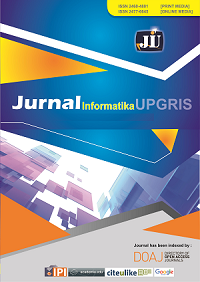
Vol 11, No 1: JUNI 2025
Table of Contents
Articles
|
Alvin Rainaldy Hakim
|
1-6
|
|
agustia hera maharrani, fitria wulandari, Agung wardoyo
|
7-10
|
|
Savira Narita Rachman
|
11-18
|
|
Geovano Galan Widiatmoko Putra
|
19-26
|
|
Alvina Waihda Ardhani
|
27-33
|


